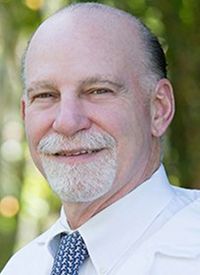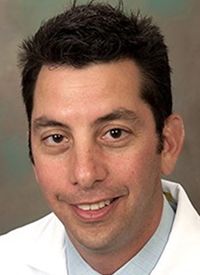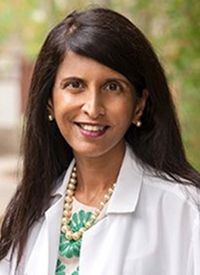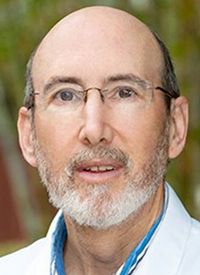Article
Research Flourishes in Hematologic Malignancies at City of Hope
Author(s):
Experts from City of Hope share insight on some of the pivotal research being conducted at their institution.
At the 2019 OncLive® State of the Science Summit™ on Hematologic Malignancies, we asked experts from City of Hope to share insight on some of the pivotal research being conducted at their institution.
Steven T. Rosen, MD

Steven T. Rosen, MD
Steven T. Rosen, MD
Irell & Manella Cancer Center Director’s Distinguished Chair, Morgan & Helen Chu Director’s Chair of the Beckman Research Institute, Provost and Scientific Officer, Director, Comprehensive Cancer Center, Director, Beckman Research Institute, Director, Irell & Manella Graduate School of Biological Sciences, Professor, Department of Hematology & Hematopoietic Cell Transplantation, and Hematologist/Oncologist, City of Hope
“At City of Hope, the two most important strategic areas for us are precision medicine—in fact, we acquired The Translational Genomics Research Institute, a nonprofit in Phoenix, Arizona, that has a CLIA lab to do detailed analyses—and on the other end of the spectrum, the latest therapeutics. We are actually able to make, on campus, small molecules, biologics, and stem cells. Last year, we [performed] over 800 stem cell transplants. We’ve treated over 300 patients with CAR T-cell therapy. That is a unique strength of our institution.”
Matthew G. Mei, MD, assistant clinical professor, Department of Hematology and Hematopoietic Cell Transplantation, and hematologist/oncologist, City of Hope

Matthew G. Mei, MD
Matthew G. Mei, MD
Assistant Clinical Professor, Department of Hematology & Hematopoietic Cell Transplantation, and Hematologist/Oncologist, City of Hope
“We’re heavily involved in the trial of the checkpoint inhibitor nivolumab (Opdivo) as the first salvage treatment for patients with relapsed disease after frontline therapy. [With this trial, we want to] see if this will be an effective bridge to autologous transplant. Those findings will be revealed at the 2019 ASH Annual Meeting. Although I can’t reveal the results here, I can say that we are very excited to talk about that study.”
Jasmine M. Zain, MD, associate clinical professor of Hematology and Hematopoietic Cell Transplantation, City of Hope

Jasmine M. Zain, MD
Jasmine M. Zain, MD
Associate Clinical Professor of Hematology & Hematopoietic Cell Transplantation, Director, T cell Lymphoma Program, Tim Nesvih Lymphoma Research Fellow, and Hematologist/Oncologist, Toni Stephenson Lymphoma Center, City of Hope
“We have several trials being done at the City of Hope. One of the exciting things that we are doing is, we are banking tissue. We are trying to create a tissue bank for T-cell lymphomas. We are collaborating with other centers that are also doing this, so that we could have a collection of tissue samples that we can then evaluate and do genetic analysis on to see what kind of genes are being expressed or mutated.
We’re hoping that, in the future, a patient can come in, we can do a biopsy, do a genetic analysis, and then look back and see how many other patients have the same mutation and how they fared. That’s one very exciting aspect. T-cell lymphomas are not only rare, their presentations are not always nodal; as such, they’re hard to get to. The other thing that we’re trying to find out is whether liquid biopsies can be used to assess disease status, minimal residual disease (MRD) status, and so on. That’s all happening on the tissue collection side of things.
In terms of trials, based on the ECHELON-2 trial, we have two trials that we’re doing. One is looking at [brentuximab vedotin (Adcetris) plus] CHP (cyclophosphamide, doxorubicin, prednisone), which is CHOP (cyclophosphamide, doxorubicin hydrochloride, vincristine sulfate, and prednisone) without vincristine, [in peripheral T-cell lymphoma]. There is also a trial [evaluating] romidepsin plus lenalidomide (Revlimid) in elderly patients.
We are also trying to incorporate PD-1 inhibitors [into the treatment of these patients], so there’s going to be a trial with nivolumab and EPOCH (etoposide, prednisone, vincristine, doxorubicin, and cyclophosphamide) in the upfront setting. In the relapsed setting, we’re looking at combination therapies now, such as pemetrexed and pembrolizumab (Keytruda). PD-1 inhibitors, when used by themselves, have not been very promising in PTCL because these patients sometimes have flares. However, combining these inhibitors with other agents, such as chemotherapy, may be the answer.
We’re also looking at some molecular targets. [We’re doing work with] venetoclax (Venclexta), and we’re hoping that this can open up some therapeutic options. [There is also research being done with] bispecific antibodies. Beyond that, our research team is focusing on trying to develop either a CAR T or a CAR NK for T-cell lymphomas, to try to mimic what we’re doing in other diseases and offer that to our patients. Every patient comes to me and wants CAR T-cell therapy and then I have to explain to them that we don’t have a CAR T-cell product for T-cell lymphomas. I’m hoping that we can change that.”
Michael A. Rosenzweig, MD, assistant clinical professor of Hematology and Hematopoietic Cell Transplantation and hematologist/oncologist, City of Hope

Michael A. Rosenzweig, MD
Michael A. Rosenzweig, MD
Assistant Clinical Professor of Hematology & Hematopoietic Cell Transplantation and Hematologist/Oncologist, City of Hope
“There’s a trial that we’re opening at the City of Hope where patients [with multiple myeloma] will be randomized to one of two maintenance arms: daratumumab (Darzalex) plus lenalidomide or lenalidomide alone. In another trial that we’re opening, patients will receive subcutaneous daratumumab as a maintenance agent. We’re particularly excited about that one, [and the possibility] to be able to give daratumumab as a 5-minute infusion [as compared with] a process that typically takes several hours.”
Amrita Krishnan, MD, director, Judy and Bernard Biskin Center for Multiple Myeloma Research and Professor, Department of Hematology and Hematopoietic Cell Transplantation, City of Hope

Amrita Krishnan, MD
Amrita Krishnan, MD
Director, Judy and Bernard Biskin Center for Multiple Myeloma Research and Professor, Department of Hematology & Hematopoietic Cell Transplantation, City of Hope
“We have multiple [projects that we’re working on]. One of the things that we’re looking at is a new CAR T cell against CS1, and we’re very excited about that because relatively few centers have been looking at other newer targets in the myeloma space. We have some work looking at imaging as well, so using radiolabeled daratumumab and trying to find out if we have better ways of detecting myeloma in the body. We’re very excited about that work; that’s [being examined] in a phase I trial with us. We also have some work ongoing in terms of looking at CD30 expression in myeloma cells, as well as immune effector cells to try to understand daratumumab resistance.
Then, we have trials evaluating daratumumab as maintenance therapy after stem cell transplantation because we certainly are a tremendous transplant center, and one of the questions that we have is, ‘Are there better maintenance strategies than the current ones that we have?’
We just opened two trials. One trial is using single-agent daratumumab maintenance after single autologous transplant and then the other trial, which is really exciting for us, is going to ask the question that patients with myeloma have been wanting an answer to for a long time now: ‘How long do I have to be on maintenance for?’ This trial is going to use MRD testing to help guide maintenance decisions. Patients are going to receive either lenalidomide and daratumumab maintenance or lenalidomide alone for 2 years, and then investigators will assess for MRD. Patients who are MRD-negative will be randomized to either stop maintenance or continue maintenance. This trial will really help us understand whether a patient needs to be on maintenance for life, and can we use MRD to help guide therapy? We’re very excited about that trial; it’s one that we are leading through SWOG.”
Vinod A. Pullarkat, MD, clinical professor of Hematology and Hematopoietic Cell Transplantation and Hematologist/Oncologist, City of Hope

Vinod A. Pullarkat, MD
Vinod A. Pullarkat, MD
Clinical Professor of Hematology & Hematopoietic Cell Transplantation and Hematologist/Oncologist, City of Hope
“We have a lot of novel and interesting research being done in the CAR T-cell area in that we have new forms of CAR T cells [that we are working on]. We also have trials exploring combinations of immunotherapies [in patients with acute lymphoblastic leukemia (ALL)].
Additionally, we have venetoclax trials, where we are combining venetoclax with chemotherapy in the frontline setting. We also have trials using novel agents in patients with relapsed ALL. These are all of the different research areas we are exploring. We are really interested in evaluating strategies for the subsets of patients [with ALL] who don’t do well with chemotherapy.”
David S. Snyder, MD, associate chair, Department of Hematology and Hematopoietic Cell Transplantation, professor, Hematology and Hematopoietic Cell Transplantation, and Hematologist/Oncologist, City of Hope

David S. Snyder, MD
David S. Snyder, MD
Associate Chair, Department of Hematology & Hematopoietic Cell Transplantation, Professor, Hematology & Hematopoietic Cell Transplantation, and Hematologist/Oncologist, City of Hope
“We have a ruxolitinib (Jakafi) prophylaxis trial that is ongoing. We also have several clinical trials that we’re involved with in which we are trying to develop some other drugs [in myelofibrosis]. One such agent is pacritinib, [which we’re looking at] in that niche of patients whose platelet count is <50,000 and for whom ruxolitinib is not really indicated. We’re helping to develop that trial of that drug.
There are other agents, [such as] a compound that is a PI3K inhibitor; it’s an oral agent and there is a protocol that combines that PI3K inhibitor with ruxolitinib to see if the combination will synergize. There’s another compound that’s called tagraxofusp (Elzonris) from Stemline Therapeutics; that’s an interesting compound that combines an interleukin 3 molecule with diphtheria toxin, which was recently approved for blastic plasmacytoid dendritic cell neoplasm, a disease characterized by the CD123 protein. In those with myelofibrosis, their stem cells also have CD123 on their surface so it’s a potential target for this agent. Again, it’s a different mechanism, a different way of trying to get at the stem cells.”









